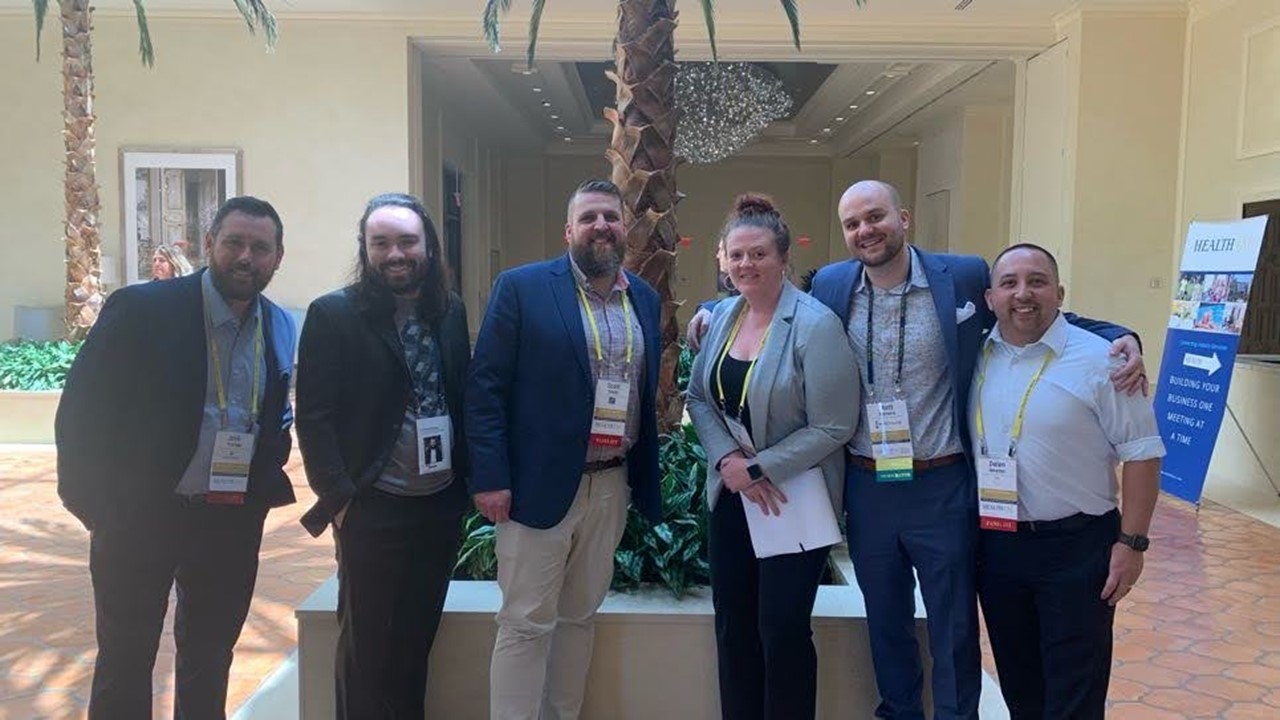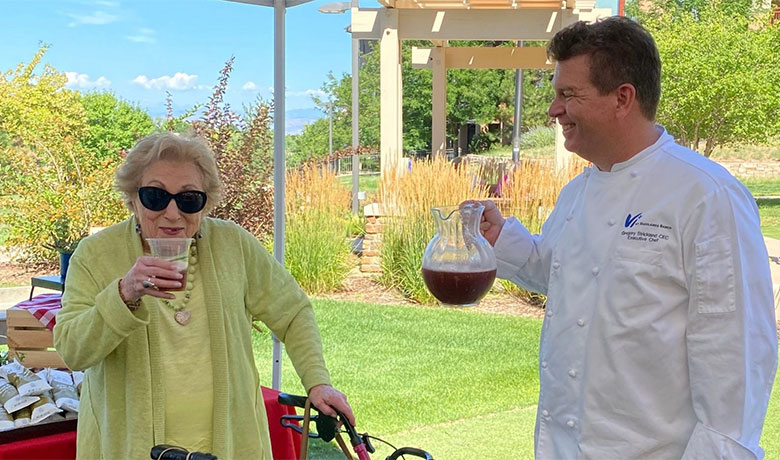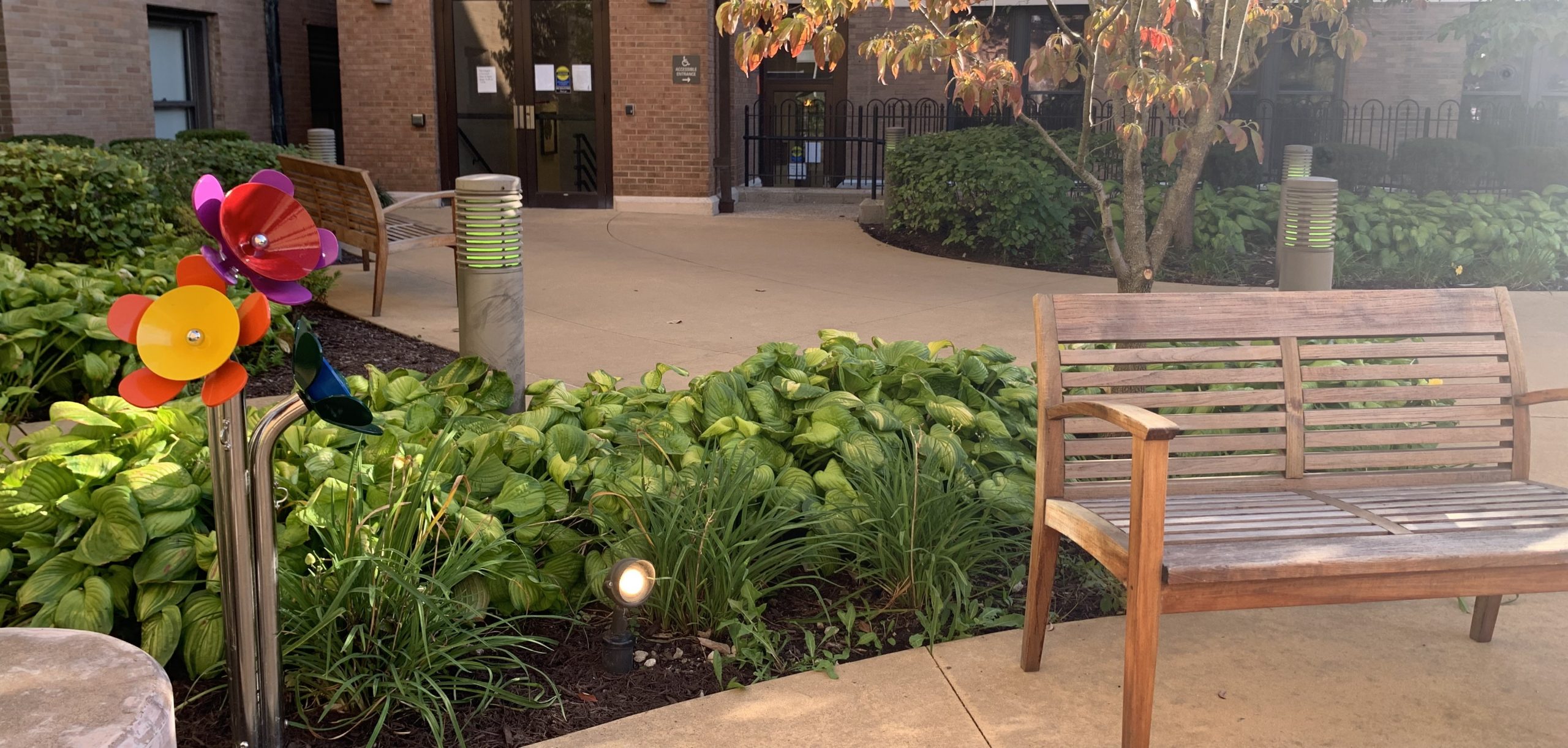
The Middle Way: Discussing the Middle Market with Novellus Living’s Chris Coulter
By Jim Nelson | April 19, 2024
 “If you have a good middle-market product, you don’t have to destroy a family’s financial well-being.”
“If you have a good middle-market product, you don’t have to destroy a family’s financial well-being.”
That’s a quote from Chris Coulter on his company’s website. That company is Novellus Living, a senior living operator in Roseville, California, give or take 20 miles northeast of Sacramento. Coulter and his partner, Larry John, founded Novellus in early 2019 and at the moment they have seven middle-market communities — three in California, two in Texas, one in Colorado, and one in Arizona.
The middle market is basically what it sounds like: the market in the middle, with the top and bottom of the market represented by market-rate, private-pay communities, and affordable, subsidized housing, respectively. In the U.S. the national median cost for assisted living is just under $5,000 per month, according to A Place for Mom’s 2024 Cost of Long-Term Care and Senior Living report.
To appeal to a middle-income senior, middle-market communities need to be at a more reasonable rate. And it’s necessary to quickly have much more middle-market housing available because according to NIC more than half of middle-income seniors will not be able to afford housing by 2029, which is when the number of middle-income seniors is expected to be nearly 14,5 million. Something like six million middle-income seniors — about four out of every 10 — will not be able to afford assisted living even with their home equity, and 40 percent of middle-income seniors don’t have adult children who will be able to supplement their needs.
Novellus Living was recently honored with an award from Assisted Living Magazine, based on an evaluation of online reviews, publications, and industry benchmarks.
We recently talked with Coulter about Novellus’ approach to the middle market.
SENIOR LIVING NEWS: How did Novellus decide to focus on the middle market?
CHRIS COULTER: It’s such a no-brainer for me. I really don’t understand why we don’t have more operators and owners who are focusing on the middle income. It doesn’t mean low income; we don’t do low income. Middle income, for us, is just making sure we’re right in the market where a middle-income person can afford it. We’re not giving rebates, we’re not out saying, ‘Well, we should charge $4,000 a month in rent but we only charge $2,000 because we’re nice guys.’ That’s not the play here. The play instead is to say, ‘We are in the space trying to serve the middle-income senior, and the reason we can be in that space is because we buy our buildings accordingly.’
We looked at census data. I like to read a lot, I like to try to connect dots and say, ‘What is the information telling me?’ It’s not hard. Anybody can understand it. I talk to investors who have no understanding of the senior-housing business, and I say, ‘By the time they become seniors, they’re not going to inherit $10 million. They’re not going to sell their houses and make all this money. They have their nest egg. They’re living accordingly. And they’re going to go into their senior years and need to find middle-market solutions. They need to stay in what is more of an affordable space rather than a high-end space and they don’t want to go to the low-ends.’
So, I scratch my head and go, ‘Why aren’t there more people like me in the industry?’ I think it’s because as an industry we tend to follow the shiny things — well, as a culture we do it, but as an industry we do it, too — the hip, the new, the technology, the great new building, the ‘build it, they will come,’ this is going to be awesome, let’s go spend $10 zillion and someone will afford it. There are a minority of people who will afford the super high-end stuff, but there are more people who have a need in this middle space, who are hopefully going to seek after and afford what we’re trying to do. We don’t over improve our buildings — we want them very functional; we want them workable. We don’t have hot tubs and you’re not going to find gold-seated toilets, but on the other hand we’re all doing the same thing, right? We’re all feeding people and housing them and clothing them and washing their stuff. We’re just not adding caviar.
SLN: What about the challenges that you face in the middle market that you may or may not face if you went for the luxury market?
CC: I can’t pay my workers as much. My margin’s much different. We face challenges, but different challenges; a really beautiful building that’s charging high rates, they’re having the same problems that I am in terms of filling beds, finding employees — there’s not a lot of people who want to work in the senior housing business. And trust me, they’re not overpaying their employees either. If you put my middle-market building next to a high-end building, we’re all doing the same thing: I have workers, they have workers. I’ve got to pay for utilities, they’ve got to pay for utilities. I’ve got to buy food, they’ve got to buy food. We’re all doing the same thing; they’re just paying a little bit more for it. They might be offering a little bit more, but they’re also charging a whole lot more. A whole lot.
SLN: Tell me about your goal over the next few years.
CC: We’re stuck, as everyone is, right now because interest rates are crazy, and the sellers aren’t selling property types that we want. The capital is not there and the debt’s not there. If it was up to us, we’d add five buildings a year, maybe seven, maybe a portfolio and add three or four here and there. We’ve really been spending some time bulking up our operations. Right now, my partner Larry is fully in the investment side; we have two companies: Novellus Investments, which is our real estate company, and Novellus Living, which is our operating. I tend to spend about 95 percent of my time on Novellus Living, doing operations and leading that team, which is a pretty busy team. Larry is focusing more on the investment side, the acquisition side, and it’s drier than dry. We know real estate, which has really helped us understand our bases, but our goal is to bulk up our operations side of things right now as much as we can, because we know there’ll be many, many more acquisitions in the next few years.
We just onboarded a building in October, a building from a former operator. So, really smoothing out how we do transitions from one operator to the next. Holy moly, someone should have warned me what that was about when I started doing this. Oh, my goodness, it is total craziness when we do that. And we probably had one of the best transitions that we could have in this last one. We did it on October 1, which was a Sunday, and I flew down on Saturday to San Diego and looked at my full team on Zoom and our people who were there, and I said, ‘Somebody tell me, are the lights going to be on? Is internet going to work? Do we have food?’ I knew all the answers to the questions, but it’s really hard the first couple of months of taking over a building. It is a lot of smoothing out a lot of things.
SLN: When you have bought properties, you’re don’t go for a whole slew of high-end amenities; what is a shortlist of amenities that are absolutely necessary to upgrade or keep?
CC: I would say less amenities and I would call them more operational systems that we think need to be clearly in place. When we go in, we have to look at both how the building is working and also at the internal operations. So, at this building down in Southern California in the San Diego area — it’s was formerly Brookdale Claremont, now Novellus Claremont. When we take a building over it takes us six months, a year, sometimes 18 months from the time that we hear about the building and then we get into contract. There is this period when the owner says, ‘We’re going to sell the building’ and then we actually step in, and oftentimes what happens is the building gets neglected … the owner is kind of like, ‘I don’t want to do anything else. I’m going to sell this.’ So, we oftentimes walk in, and air conditioning units aren’t working correctly, or safety systems need to be addressed, elevators need to be maintained and they’re not. I’ve walked into kitchens and you’re like, ‘Half of your stuff doesn’t work.’ ‘Well, we asked the owner and they said, “We’re selling the building, so….” They’re going to spend as little money and time as they possibly can. So, we have to initially go in and, I don’t know if I would say we’re upgrading amenities; we’re just making sure all the things that should be functioning correctly are actually functioning correctly in the building.




